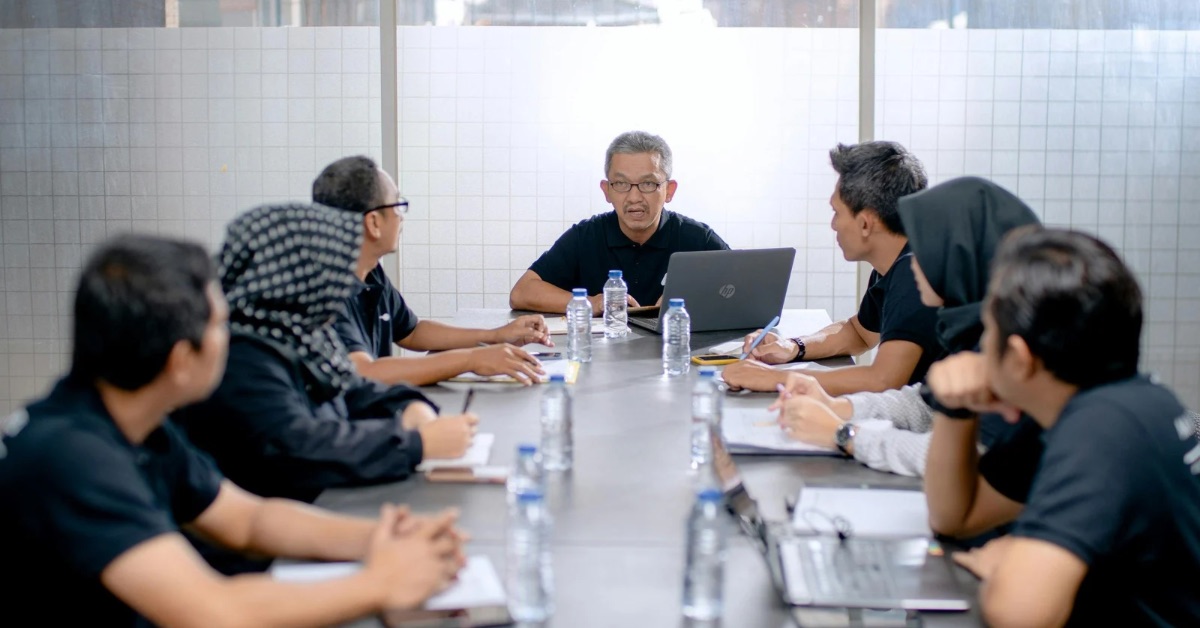10 Must-Watch TED Talks About Cyber Security World
October 5, 2023, 6 min read
People typically choose to work rather than listen to professional conversations because the typical quality of discourse is so low. You’ll notice this phenomenon in a wide variety of meetings: by the time the second slide is shown, attendees are already finishing a report or responding to emails. Fortunately, this is not the case for all talks; for more than twenty years, TED talks have been shining a ray of hope on this otherwise dark image. In this article, we will provide you with a list of the Top 10 TED Talks to Learn About Cybersecurity, in addition to providing you with recommendations and tips on how to enhance your presentations.
A sense of safety is synonymous with being in a safe environment. Indeed, the experience of being secure and the reality of being secure are related in some way, but it is also true that these two aspects of security are not the same thing. When people’s ideas about how safe a situation is don’t match up with how safe it is, it’s usually because their ideas about how risky the situation is don’t match up with how risky it is.
We do not perform a mathematical analysis of security flaws in which the relative likelihood of certain occurrences is compared and contrasted. Instead, we rely on heuristics, which is a catchall term that refers to shortcuts, general principles, preconceptions, and biases. These heuristics influence how we think about risks, how we evaluate the probability of future events, how we think about costs, and how we make trade-off decisions. And when these heuristics don’t work, it throws off our sense of security, which isn’t always in line with how safe we are.
Expert in cryptography Bruce Schneier discusses some of the cognitive biases that contribute to our inadequate risk assessment in the field of cybersecurity, as well as strategies for overcoming those prejudices.
Chris Domas, a researcher in cybersecurity, relates how he spent thirty hours in the lab attempting to decrypt a binary code. During that time, he had an epiphany regarding a more effective way for people to process that kind of data. Domas explains how the process of converting binary information into a visual abstraction might help researchers save a significant amount of time and potentially even people’s lives.
The former vice president of IBM Security has proposed that the response to cybercrime should be the same community effort that we use to a health catastrophe like COVID-19. This would involve the exchange of up-to-date information regarding who is affected and how the disease is spreading. According to Barlow, we need to make risk intelligence data more accessible to the general public. We must convince public and private organizations to open up and share the information that is held privately by them. Because the hackers who are attacking us are moving quickly, we need to do the same. And the most effective method for accomplishing this is to make data about what is taking place publicly available and to share it. If you do not contribute to the solution of the problem, then you are a contributing factor.
4. Mikko Hypponen: Eliminating Viruses and Protecting Online Communities
It has been 25 years since the first personal computer virus, known as Brain A, spread across the internet by copying itself from diskette to diskette. What was once an inconvenience has evolved into a sophisticated instrument that may be used for criminal activity and espionage. Hypponen will discuss how the economy of cybercrime works in this TED talk that he is giving.
A puzzling conundrum was presented by the Stuxnet computer worm when it was initially found in the year 2010. In addition to its exceptionally high level of intelligence, there was a more perplexing mystery surrounding it, and that mystery was its purpose. Ralph Langner and his team discovered that the Stuxnet worm was a cyberphysical attack that was directed at a particular target. They determined that the target was the Iranian nuclear program, which was something that no one wanted to believe for several months, and they evaluated the specifics of how this attack, or more accurately these two strikes, were intended to operate. You will obtain an understanding of how targeted assaults against vital infrastructure operate after listening to this talk.
Three main categories of people launch cyberattacks: cybercriminals (who want to get wealthy by operating illegal online businesses), hacktivists (who want to protest and influence political situations), and governments. Cybercriminals aim to make money by running illicit online businesses. The goal of governments is to monitor and exert control over their citizens. Yes, even in the democracies of the West: Your government is conducting surveillance on you.
Cyberattacks involve more than just stealing data or damaging computers. They are also capable of killing. This session will show how to hack equipment that can affect human lives, such as medical gadgets, autos, and so on. Any gadget that runs software could potentially be compromised. It will have flaws that can be used to gain an advantage. We must not forget that there must be some level of security built into every piece of technology.
Are you conscious of the information that can be gleaned about you from your devices? In exchange for ease and practicality, how much of your safety and privacy do you surrender? Malware is successful because 99 percent of its targets do not adopt even the most fundamental safety measures. What methods does malware use to attack? What dangers lie in wait for you? And what measures can you take to safeguard yourself? During this TED Talk, James Lyne will instruct you on how to do it.
Users are typically required to adhere to a predetermined set of guidelines, known as a password policy when selecting a password. This is done so that administrators and organizations can combat the inherent and user-induced vulnerabilities that are associated with text-based passwords. What characteristics should a strong password possess? Lorrie Cranor offers some answers to popular questions about passwords as a result of her research into hundreds of actual passwords to identify the most startling and prevalent errors made by users.
What is the point of using a lock to protect your home if anyone can enter through a connected device? You tick the box indicating that you have read the terms and conditions, even though you have not done so, and then Boom! You are giving your consent to the collection and use of your personal information. The onus of responsibility falls solely on the shoulders of the customer. The only way for technology to be beneficial to society is if the most fundamental human rights, such as privacy, are protected.
Conclusion
In this collection of TED Talks, professionals in the fields of hacking, cyberpsychology, and cybersecurity discuss the fundamentals of protecting one’s privacy and safety while using the internet. Additionally, they want to dispel (quite literally in one instance) the notion that hackers are nothing more than a danger to society. Hackers may be our saviors.
TED is a nonprofit organization that supports a series of presentations exploring places and topics to assist individuals in gaining a deeper understanding of themselves and the world around them. These 10 thought-provoking TED Talks are for you if you have an interest in the field of cybersecurity.
Image Source: Image by macrovector on Freepik




























